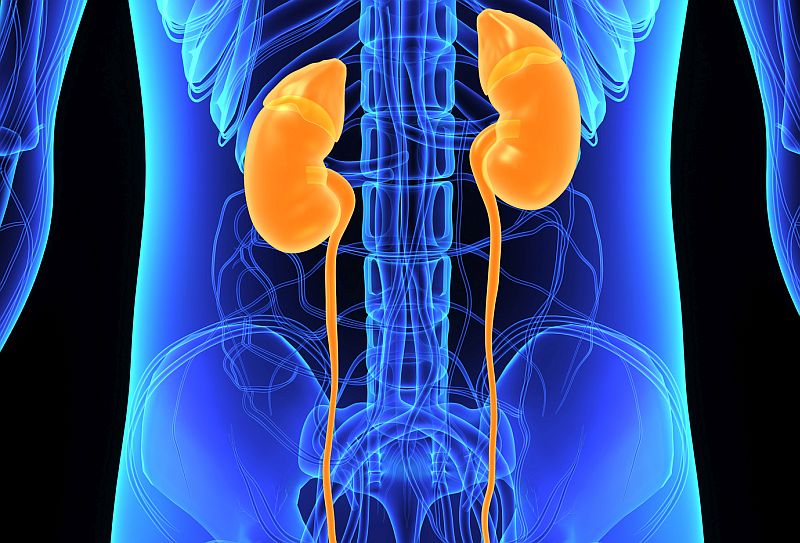
A drug used for some cases of kidney disease can raise the risk of serious infections, researchers say.
A clinical trial was stopped early when researchers discovered that patients on the drug — a corticosteroid called methylprednisolone — suffered a concerning number of serious side effects. Most often, that meant severe infections, including pneumonia and meningitis.
Overall, nearly 15 percent of patients on the drug had a serious “adverse event” over two years, the investigators found.
That compared with 3 percent of patients given placebo pills, the researchers reported.
The study focused on patients with a form of kidney disease called immunoglobulin A (IgA) nephropathy. It arises when IgA — an immune system protein — builds up in the kidneys, leading to inflammation.
Methylprednisolone and other corticosteroids suppress the immune system and quell inflammation related to severe allergies, asthma, arthritis and other conditions. Some small studies had suggested they can help treat IgA nephropathy.
Since the drugs dampen the immune response, it’s no surprise that infections would be a side effect, kidney disease experts said.
“What was alarming was the magnitude of the risk,” said Dr. Michelle O’Shaughnessy, who wrote an editorial published with the study. “It was greater than we might have anticipated.”
Yet the findings should not spell the end of corticosteroids for IgA nephropathy, said O’Shaughnessy, a kidney disease specialist at Stanford University.
She noted that when the trial was stopped, there were signals that methylprednisolone was also benefiting patients. Those on the drug had a lower risk of progressing to severe kidney disease or dying from the condition.
The issue, O’Shaughnessy explained, is that only a relatively small number of patients had developed kidney complications at that point in the trial. So no firm conclusions can be made.
“The infection risk shows up early, soon after patients begin taking the drug,” O’Shaughnessy said. “But any benefits would take a longer time to show up.”
Dr. Vlado Perkovic, the senior researcher on the trial, agreed.
Since corticosteroids might help some patients with IgA nephropathy, studies should keep looking into safer ways to deliver them, said Perkovic, of the George Institute for Global Health, in Australia.
For now, he said, “caution” should be used in prescribing corticosteroids for IgA nephropathy, and patients should be told of the risks so they can make an “informed choice.”
As it stands, only a minority of IgA nephropathy patients would be on a corticosteroid, O’Shaughnessy said. (She noted that in the United States, prednisone is the predominant one.)
A mainstay of treatment is blood pressure control with drugs like ACE inhibitors, to help limit damage to the kidneys, O’Shaughnessy explained. Patients may also take a diuretic to help remove excess fluid from the blood.
Current guidelines say a six-month course of corticosteroids can be considered for some patients. But the guidelines are based on small studies.
This latest trial put corticosteroids to a tougher test.
Perkovic’s team randomly assigned 262 patients to a course of either methylprednisolone pills or an inactive placebo.
The trial was stopped when it became clear that patients on the drug had a five-times higher rate of adverse effects — mainly infections.
At that point, though, the treated patients’ rate of kidney complications was lower. Just under 6 percent (eight participants) had progressed to severe kidney disease or died, compared with 16 percent (20) of placebo patients, according to the report.
Where does that leave patients and doctors? O’Shaughnessy said it will be important to think about each individual situation.
A younger patient in otherwise good health may have a high risk of eventually progressing to end-stage kidney disease and needing dialysis. For that person, O’Shaughnessy said, the possible benefits of corticosteroids may outweigh the infection risk.
But for an elderly person in poor health, she said, the risk of a dangerous infection may weigh more heavily.
The state of the kidney disease matters, too. Over time, IgA nephropathy can cause irreversible scarring of the kidney tissue. For patients with a lot of scarring, corticosteroids would be unlikely to help; for those with inflammation but little scarring, the drugs would likely be more effective, O’Shaughnessy suggested.
IgA nephropathy is thought to be an autoimmune disease, according to the U.S. National Institutes of Health (NIH). That means it’s caused by an abnormal immune system attack on the kidneys.
A person can have the disease for years without knowing it, the NIH says. When signs do arise, they can include blood or protein buildup in the urine.
About 20 percent to 40 percent of adults with IgA nephropathy progress to end-stage kidney disease within 10 to 20 years, according to the NIH.
The study results appear in the Aug. 1 issue of the Journal of the American Medical Association. Pfizer Pharmaceuticals provided the study drug.
More information
The U.S. National Institute of Diabetes and Digestive and Kidney Diseases has an overview of IgA nephropathy.
Source: HealthDay

Leave a Reply